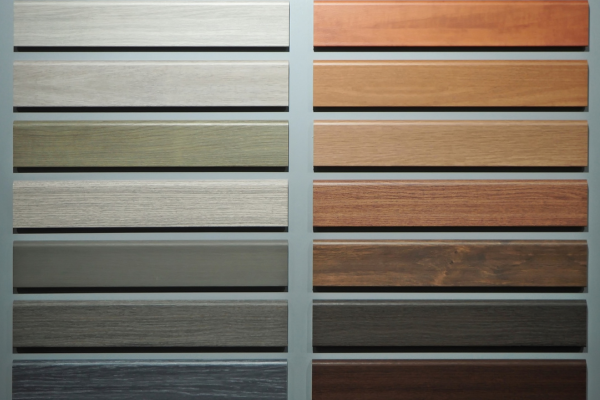When it comes to creating a cosy and functional home, few things make as big of an impact as your choice of flooring. It sets the tone for your living space, adds character, and significantly influences the comfort and functionality of your home. With so many flooring options available, making the right choice can feel overwhelming. In this guide, we’ll walk you through the key considerations for selecting the perfect flooring, the different types available, and how to make your home more comfortable, stylish, and durable, one step at a time.
1. Why Flooring Matters in Your Home
Flooring is the foundation of your home’s interior design. It’s one of the first things people notice when they enter a room, and it can instantly elevate the aesthetics of a space. Beyond appearance, flooring plays a practical role in your everyday life. It affects how you move through your home, how easy it is to clean, and even the level of insulation.
When choosing flooring, we need to think about more than just color and material. We should also consider how the flooring fits our lifestyle. For example, families with pets or young children might prefer durable materials like laminate or luxury vinyl, while those seeking a touch of elegance might opt for hardwood or stone. A carefully chosen floor can balance beauty and practicality, enhancing your living experience in every room.
2. Exploring Popular Flooring Options
Different flooring materials offer unique benefits, and the best choice depends on your needs, budget, and the purpose of the room. Let’s explore some popular options:
Hardwood
Hardwood flooring is a classic choice that adds warmth and sophistication to any room. It’s durable, easy to clean, and increases your home’s value.
However, it can be susceptible to scratches and moisture damage, making it less ideal for high-traffic areas or bathrooms.
Laminate
Laminate flooring offers the look of hardwood at a fraction of the cost. It’s highly durable, scratch-resistant, and easy to maintain, making it a popular choice for busy households. Modern laminates come in a wide range of styles and textures, giving you plenty of design flexibility.
Vinyl
Luxury vinyl flooring is a versatile and cost-effective option. It’s water-resistant, making it perfect for kitchens and bathrooms.
Vinyl is available in a variety of styles, including planks and tiles that mimic the appearance of wood or stone.
Carpet
Carpet is a cosy choice that’s perfect for bedrooms and living rooms. It adds warmth, absorbs sound, and creates a soft surface underfoot. However, it requires regular maintenance and may not be ideal for households with pets or allergies.
Tile
Tile flooring is durable, water-resistant, and easy to clean, making it an excellent choice for bathrooms, kitchens, and entryways. Available in a variety of materials like ceramic, porcelain, and stone, tile offers endless design possibilities.
3. Matching Flooring to Your Lifestyle
The right flooring should align with your lifestyle and the function of the room. Here are some tips to help you decide:
High-Traffic Areas
For hallways, entryways, and other high-traffic areas, durability is key. Consider materials like tile, laminate, or luxury vinyl, which can withstand heavy use and are easy to clean.
Comfortable Spaces
For areas where you want to create a cosy atmosphere, like living rooms or bedrooms, opt for softer materials like carpet or engineered hardwood. Adding area rugs can also enhance comfort and style.
Moisture-Prone Rooms
In spaces prone to moisture, such as bathrooms and kitchens, choose water-resistant options like tile or vinyl. These materials are not only practical but also stylish and easy to maintain.
Eco-Friendly Choices
If sustainability is a priority, look for eco-friendly options like bamboo, cork, or reclaimed wood. These materials are renewable and add a unique touch to your home.
4. Installation Tips for Flooring
Whether you’re installing flooring yourself or hiring professionals, proper preparation and execution are essential for a flawless finish. Here are some tips to keep in mind:
Prepare the Subfloor
Before installing flooring, ensure the subfloor is clean, dry, and level. A well-prepared subfloor is crucial for a smooth and long-lasting installation. Consider addressing any imperfections beforehand to avoid issues down the line.
Measure and Plan
Accurate measurements are essential to avoid material wastage. Take the time to plan your layout, especially for patterned flooring or intricate designs. This attention to detail ensures a professional-looking result.
Choose the Right Underlay
Although flooring is the star of the show, don’t overlook the importance of a good underlay. It provides cushioning, soundproofing, and insulation, enhancing the performance of your flooring. For materials like laminate or hardwood, underlay can also protect against moisture and imperfections in the subfloor.
Follow Manufacturer Instructions
Different flooring materials require different installation methods. Always follow the manufacturer’s guidelines to ensure proper installation and maintain your warranty.
5. Maintenance Tips for Long-Lasting Floors
Once your flooring is installed, proper care and maintenance are essential to keep it looking its best. Here are some general tips:
Regular Cleaning
Sweep or vacuum your floors regularly to remove dirt and debris. For hard surfaces like wood or tile, use a damp mop with a cleaner designed for the specific material. Avoid using harsh chemicals that could damage the finish.
Protective Measures
Place mats at entryways to minimise dirt and moisture being tracked onto your floors. Use furniture pads to prevent scratches, and avoid dragging heavy objects across the surface.
Address Spills Immediately
For carpets and hardwood floors, clean up spills as soon as they happen to prevent staining or water damage. Blot spills with a clean cloth rather than scrubbing.
Periodic Maintenance
Some flooring types, like hardwood, may require periodic refinishing to maintain their appearance. Be sure to follow the recommended maintenance schedule for your chosen material.
6. Investing in Quality Flooring: Why It’s Worth It
While it may be tempting to choose cheaper flooring options, investing in high-quality materials pays off in the long run. Durable flooring lasts longer, requires less maintenance, and retains its beauty for years to come. Additionally, premium flooring adds value to your home, making it a worthwhile investment if you plan to sell in the future.
Quality flooring also enhances the overall comfort and functionality of your home. From reducing noise to improving insulation, the right flooring can transform your living space into a haven of style and practicality.
By prioritising quality and taking the time to choose materials that suit your needs, you’re making an investment that will benefit your family for years to come.
Ultimately,
Flooring is a vital part of any home, influencing everything from aesthetics to comfort and functionality. By exploring the wide range of materials available and matching your flooring to your lifestyle, you can create a space that’s both beautiful and practical. Whether you’re renovating one room or tackling an entire house, thoughtful flooring choices will set the stage for a home you’ll love for years to come.
So let’s take the time to plan, invest, and install with care—because every great home starts with the perfect foundation underfoot.




